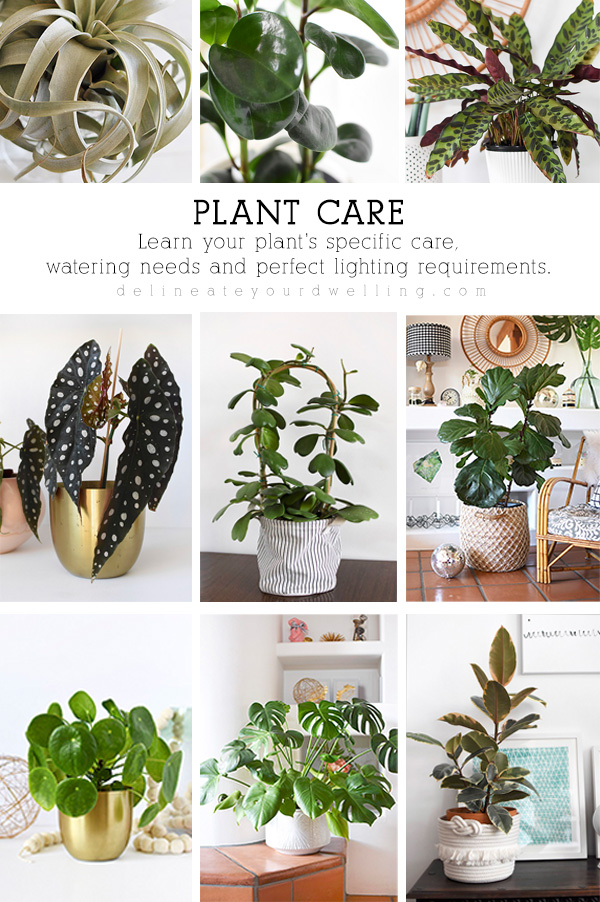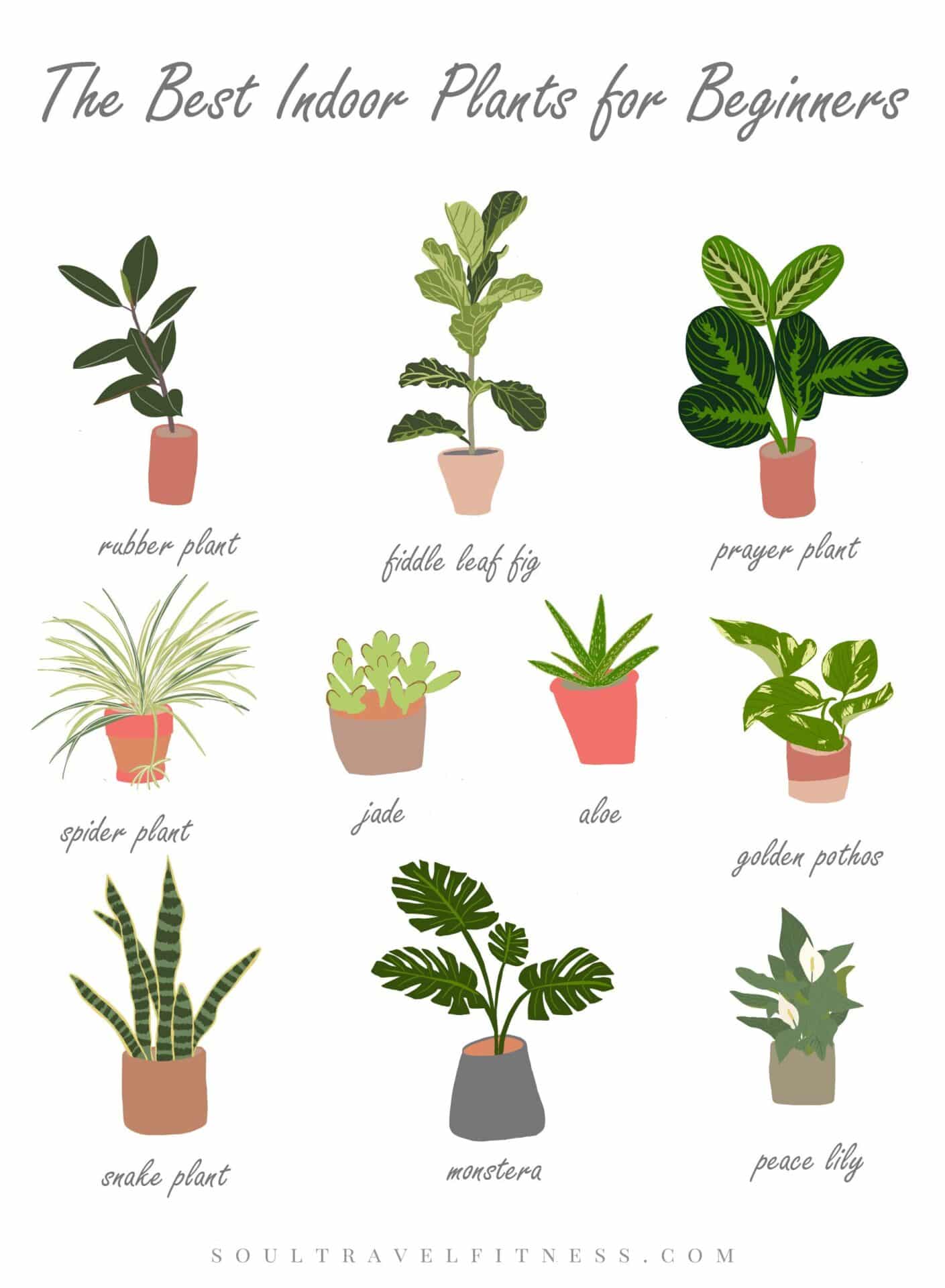Identify your house plant by examining its leaves, flowers, and growth patterns. Use plant identification apps or guides for accurate results.
House plants come in various shapes, sizes, and types, making identification crucial for proper care. Knowing the specific needs of your plant ensures it thrives in your home environment. Consider factors like leaf shape, flower appearance, and growth habits. Utilize plant identification apps or online guides to assist in recognizing your plant.
This knowledge aids in providing the right amount of water, light, and nutrients. Correct identification also helps in diagnosing any potential issues early. With the right information, you can create an optimal environment for your house plant to flourish.
Identifying Your House Plant
Identifying your house plant can be a fun and educational activity. Knowing what type of plant you have ensures proper care and growth. Let’s delve into some methods to help you identify your house plant.
Examining Leaf Shape
Leaf shape is a crucial identifier. Different plants have unique leaf shapes.
- Oval Leaves: Common in plants like Ficus.
- Heart-shaped Leaves: Often seen in Philodendron.
- Lobed Leaves: Found in Maple or Oak.
- Needle-like Leaves: Typical in Succulents and Cacti.
Observe the leaf edges too. Are they smooth, serrated, or wavy?
Observing Plant Size
Plant size can also help you identify it. Some plants grow very tall, while others remain small.
| Plant Type | Typical Size |
|---|---|
| Spider Plant | 12-24 inches |
| Snake Plant | 8 inches to 12 feet |
| Aloe Vera | Up to 24 inches |
| ZZ Plant | 16-28 inches |
Knowing the size range helps in comparing with your plant.

Credit: thecottagemarket.com
Common House Plants
House plants bring life to your home. Knowing what plant you have is essential for proper care. Understanding common house plants can help you identify and nurture them.
Popular Indoor Species
Many plants thrive indoors. Here are some popular indoor species:
- Spider Plant – Known for its long, arching leaves.
- Peace Lily – Recognizable by its white blooms.
- Fiddle Leaf Fig – Large, violin-shaped leaves.
- Snake Plant – Stiff, upright leaves with yellow edges.
Easy-to-care Varieties
If you are new to house plants, start with easy-to-care varieties:
- Pothos – Tolerates low light and irregular watering.
- ZZ Plant – Survives in low light and dry conditions.
- Aloe Vera – Needs little water and bright light.
- Jade Plant – Thrives with minimal attention.
| Plant | Light Requirement | Watering |
|---|---|---|
| Spider Plant | Indirect Light | Weekly |
| Peace Lily | Low to Bright Light | When soil is dry |
| Fiddle Leaf Fig | Bright, Indirect Light | Weekly |
| Snake Plant | Low to Bright Light | Every 2-3 weeks |
Using Plant Identification Apps
Understanding what house plant you own can be tricky. Luckily, plant identification apps can help. These apps can quickly identify plants using your smartphone’s camera. They also provide care tips and maintenance advice.
Top App Recommendations
| App Name | Features | Rating |
|---|---|---|
| PlantSnap | Identify over 600,000 plants. Provides care tips. | 4.5/5 |
| PictureThis | Real-time plant identification. Offers plant care advice. | 4.8/5 |
| PlantNet | Community-driven app. Identifies plants using photos. | 4.4/5 |
How To Use Apps Effectively
- Download the app from your app store.
- Open the app and grant camera permissions.
- Take a clear photo of your plant. Ensure good lighting.
- Upload the photo to the app.
- Wait for the app to analyze and identify your plant.
To get the best results, ensure your plant photo is clear. Avoid blurry images. Take multiple photos from different angles. This helps the app identify your plant accurately.
Using plant identification apps is an easy way to learn about your houseplants. You can also discover how to care for them better. Try these apps today and become a plant expert!

Credit: www.delineateyourdwelling.com
Consulting Plant Guides
Identifying a house plant can be exciting and educational. Consulting plant guides is a great way to learn more about your green friend. There are various resources available, both offline and online, to help you. Let’s delve into some of these helpful tools.
Best Books For Plant Identification
Books are an excellent source of detailed plant information. They often include pictures and descriptions to make identification easier.
- The House Plant Expert by Dr. D.G. Hessayon
- Indoor Plant Care by Peter McHoy
- Botany for Gardeners by Brian Capon
These books cover a wide range of plants and provide expert tips. They are a great addition to any plant lover’s library.
Online Resources
Online resources can be very useful for identifying house plants. They offer various tools and databases to help you.
Here are some top online resources:
- PlantSnap – A plant identification app with a large database.
- Garden Answers – Provides instant plant identification and care advice.
- House Plant Journal – Offers detailed plant care guides and tips.
These resources are user-friendly and often include photos and descriptions. They make it easy to identify your plant and learn how to care for it.
| Resource | Type | Features |
|---|---|---|
| The House Plant Expert | Book | Comprehensive plant care guides |
| PlantSnap | App | Instant plant identification |
| Garden Answers | App | Expert plant advice |
Asking Experts For Help
Not sure about your house plant’s identity? Experts can assist you. Consulting knowledgeable sources ensures you get accurate information.
Local Plant Shops
Local plant shops are great for seeking advice. The staff often have extensive plant knowledge. Bring a photo or a sample of the plant. They can help identify it for you. Plus, you can buy plant care products there. This ensures your plant stays healthy.
Online Plant Communities
Online plant communities are another excellent resource. Websites and forums host plant enthusiasts. They enjoy helping others identify plants. Upload a clear photo of your plant. Describe its features, such as leaf shape and color. Members will offer their insights. Here are some popular online communities:
- Reddit’s r/whatsthisplant
- Facebook plant identification groups
- Plant identification apps
Joining these communities can be very rewarding. You learn more about plants and make new friends.
Understanding Plant Care
Knowing your house plant’s needs is essential for its health. Each plant has specific requirements. These include watering needs and light requirements. Understanding these can help your plant thrive.
Watering Needs
Watering is crucial for plant health. Different plants need different amounts of water. Here are some examples:
- Succulents: Water once a week.
- Ferns: Keep the soil moist.
- Spider Plants: Water when the top inch of soil is dry.
Check the soil before watering. Overwatering can harm your plant. Underwatering can also be a problem. Balance is key.
Light Requirements
Light is another vital factor. Plants need different light levels. Here’s a simple guide:
| Plant Type | Light Requirement |
|---|---|
| Snake Plant | Low to bright indirect light |
| Fiddle Leaf Fig | Bright, indirect light |
| Peace Lily | Low to moderate light |
Place your plant in the right spot. Too much light can burn leaves. Too little light can stunt growth. Adjust as needed.
Recognizing Plant Health
Understanding your house plant’s health is essential. Healthy plants are more likely to thrive. Recognizing signs of health can help you care better.
Signs Of A Healthy Plant
- Vibrant Leaves: Healthy plants have bright, green leaves. There should be no yellowing or browning.
- New Growth: Look for new leaves or buds. This indicates that the plant is growing well.
- Firm Stems: Stems should be firm and strong. They should not be wilting or bending.
- Strong Roots: Check the roots if possible. Healthy roots are white or light brown and firm.
Common Plant Problems
| Problem | Signs | Solution |
|---|---|---|
| Overwatering | Yellow leaves, wilting, root rot | Reduce watering, improve drainage |
| Underwatering | Dry soil, brown tips, drooping leaves | Increase watering frequency |
| Pests | Holes in leaves, sticky residue, visible bugs | Use insecticidal soap, isolate the plant |
| Insufficient Light | Leggy growth, pale leaves | Move to a brighter spot |
Recognizing these signs can help you maintain a healthy plant. Regularly check your plant’s leaves, stems, and roots. This helps in early detection of any issues.

Credit: www.pinterest.com
Labeling And Documenting
Identifying your houseplants can be challenging. Labeling and documenting your plants can make this task easier. Proper documentation helps you remember each plant’s needs and preferences. This practice ensures your plants thrive and grow healthy.
Keeping A Plant Journal
A plant journal is a great tool for plant care. It helps you track each plant’s growth and needs. You can note watering schedules, sunlight exposure, and fertilizer applications. This keeps your plant care routine organized.
Use a simple notebook or a digital app for your journal. Include the plant’s name, date of purchase, and any specific care instructions. Regularly update your journal with observations and changes. This habit will help you understand your plant’s behavior better.
Using Plant Tags
Plant tags are small labels placed in plant pots. They identify the plant and provide care instructions. You can buy pre-made tags or make your own. Use durable materials like plastic or metal for long-lasting tags.
Include the plant’s common name and scientific name on the tag. Add basic care tips such as watering frequency and light requirements. This information will be handy when caring for multiple plants.
Here’s a simple example of a plant tag:
| Plant Name | Watering | Light |
|---|---|---|
| Spider Plant | Once a week | Indirect sunlight |
By labeling and documenting, you simplify plant care. You ensure each plant receives the attention it needs. Happy gardening!
Frequently Asked Questions
How To Identify An Indoor Plant?
Identify indoor plants by their broad, green leaves and compact size. They thrive in low light conditions. Check for labels or tags. Look for common indoor varieties like pothos, spider plants, and peace lilies. Observe their need for regular watering and moderate humidity.
How Do I Find Out What Kind Of Plant I Have?
Use a plant identification app or consult a gardening expert. Check plant leaves, flowers, and growth patterns.
Is There A Website To Identify House Plants?
Yes, websites like PlantSnap and PictureThis can help identify house plants. Simply upload a photo for identification.
How Can I Identify A Plant Without An App?
Identify a plant by observing leaf shape, size, and color. Check flower and fruit characteristics. Use field guides or botanical books. Consult local experts or gardening centers.
Conclusion
Identifying your house plant can be simple with the right tools. Use plant identification apps for quick answers. Research common house plants to match features. Join plant forums for expert advice. Understanding your plant helps ensure proper care. Enjoy the journey of becoming a knowledgeable plant parent.

My mission is to help you bring the beauty of nature indoors with expert advice, detailed plant care guides, and creative design ideas.





Leave a Reply